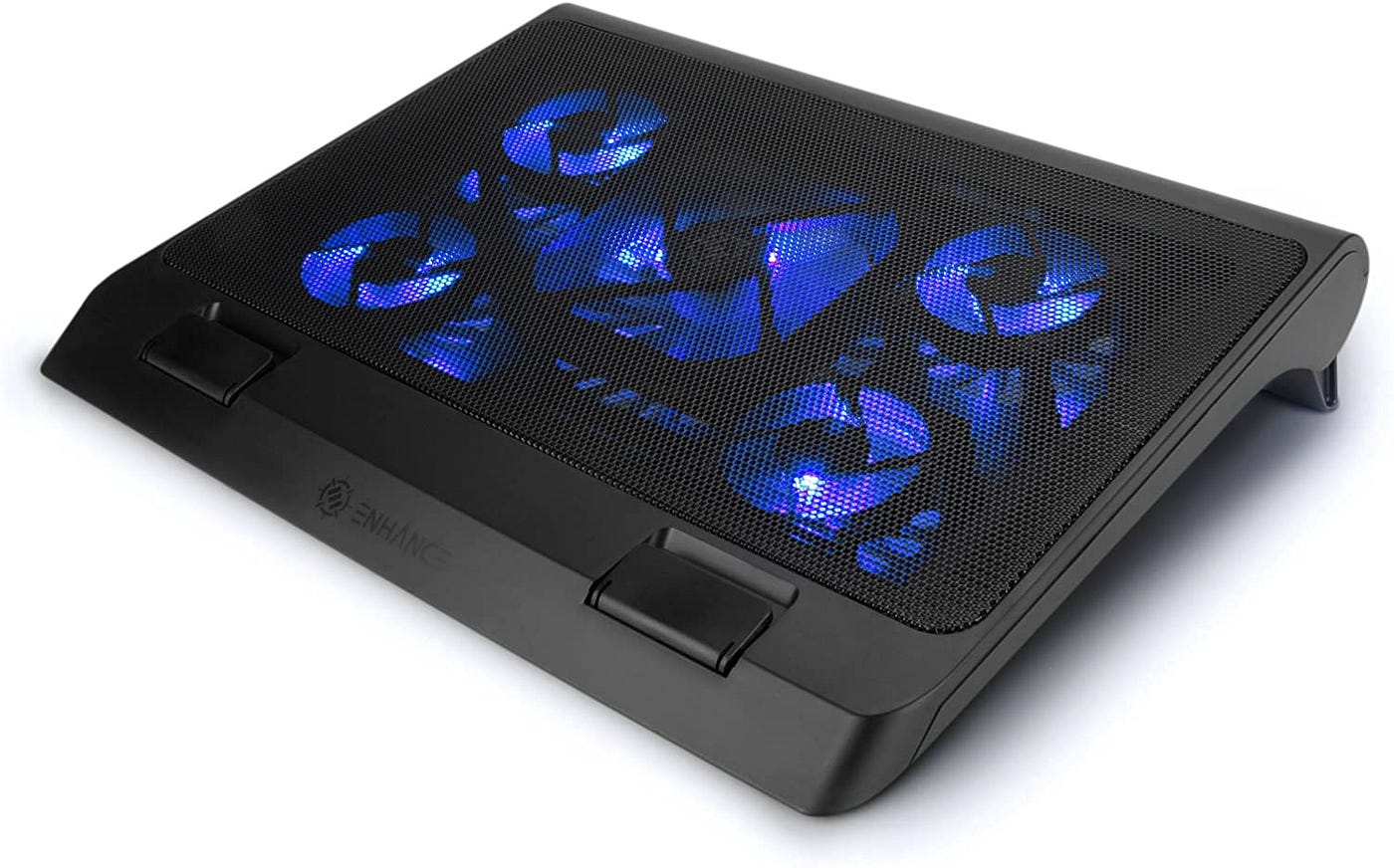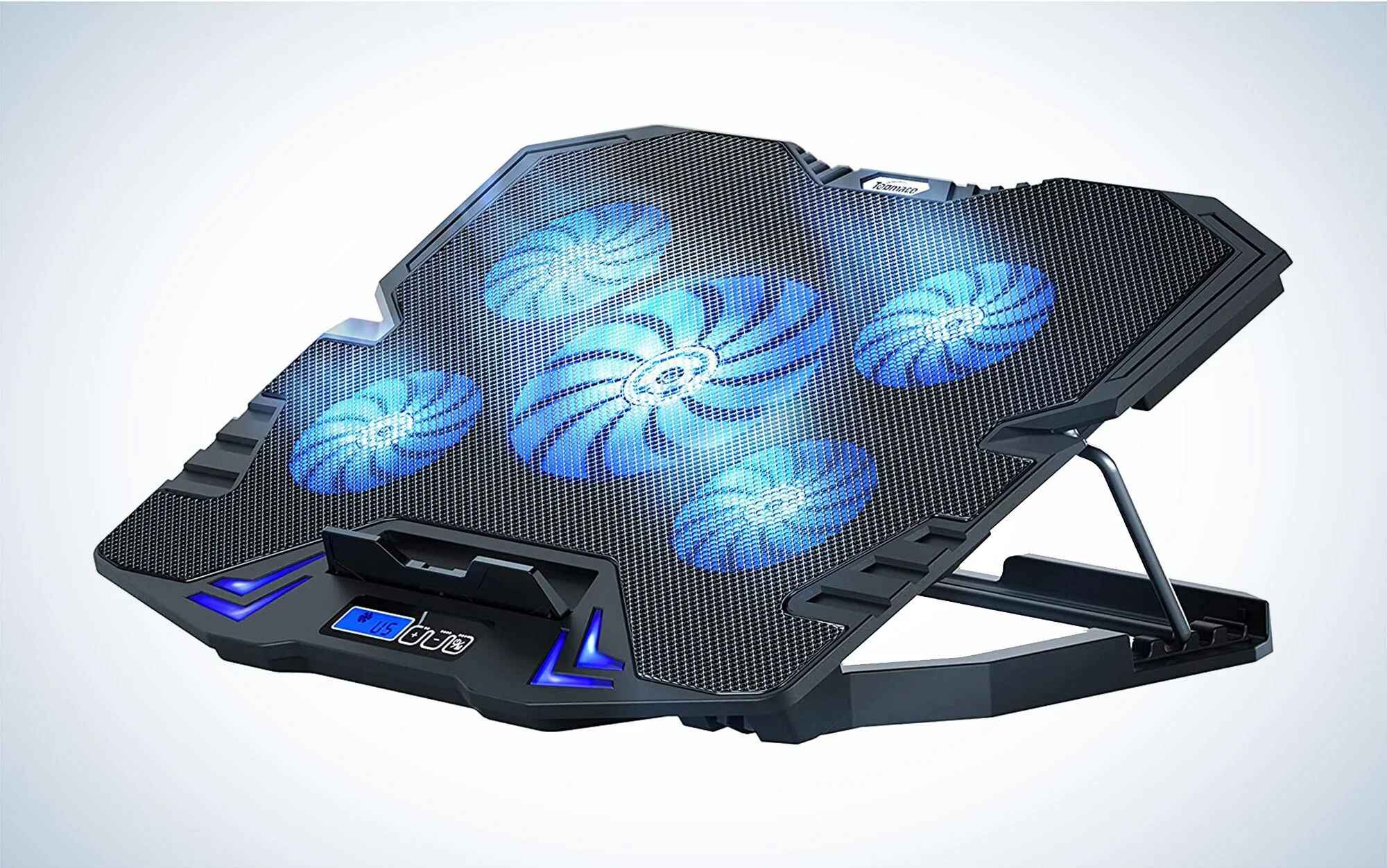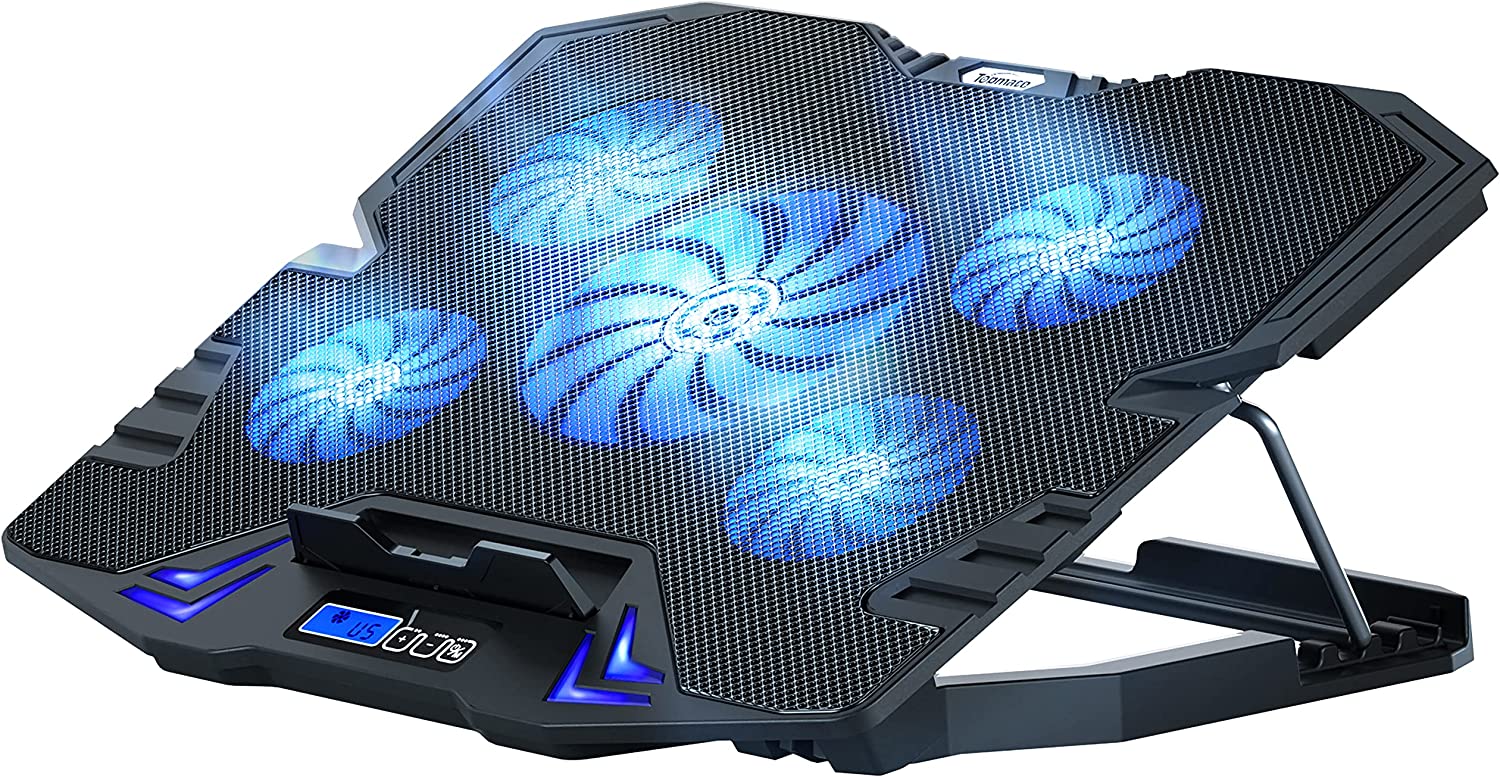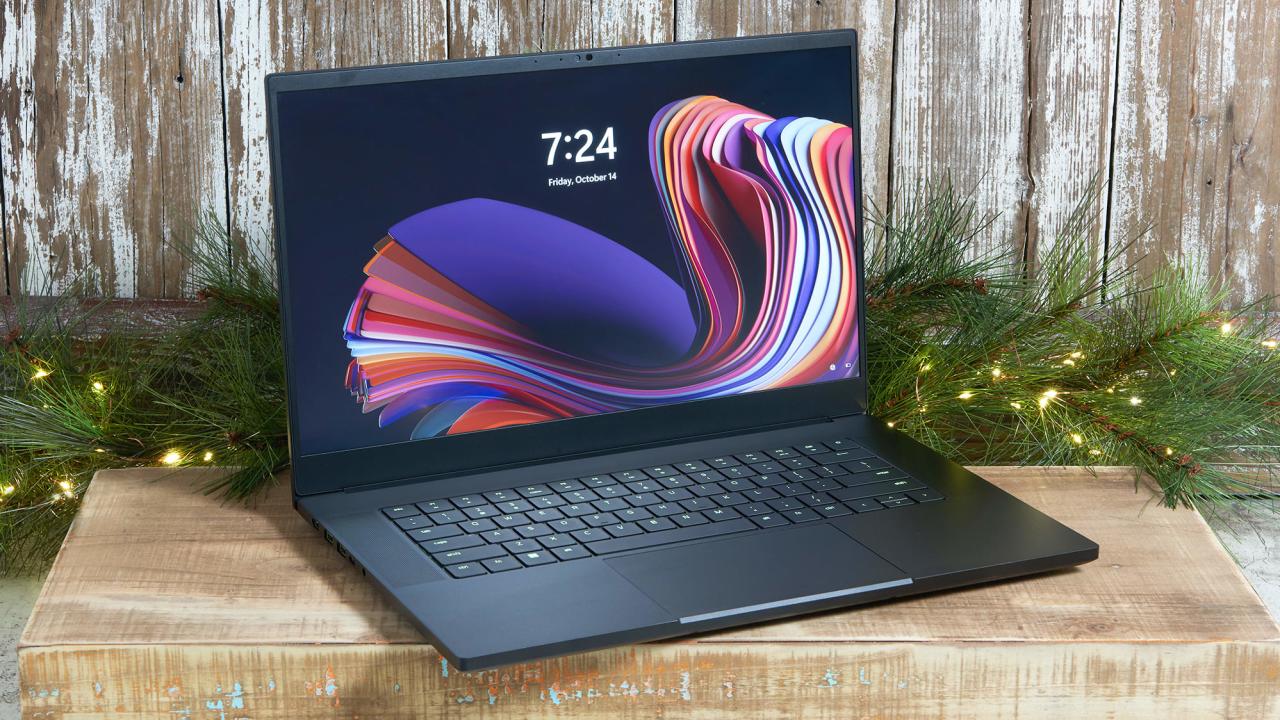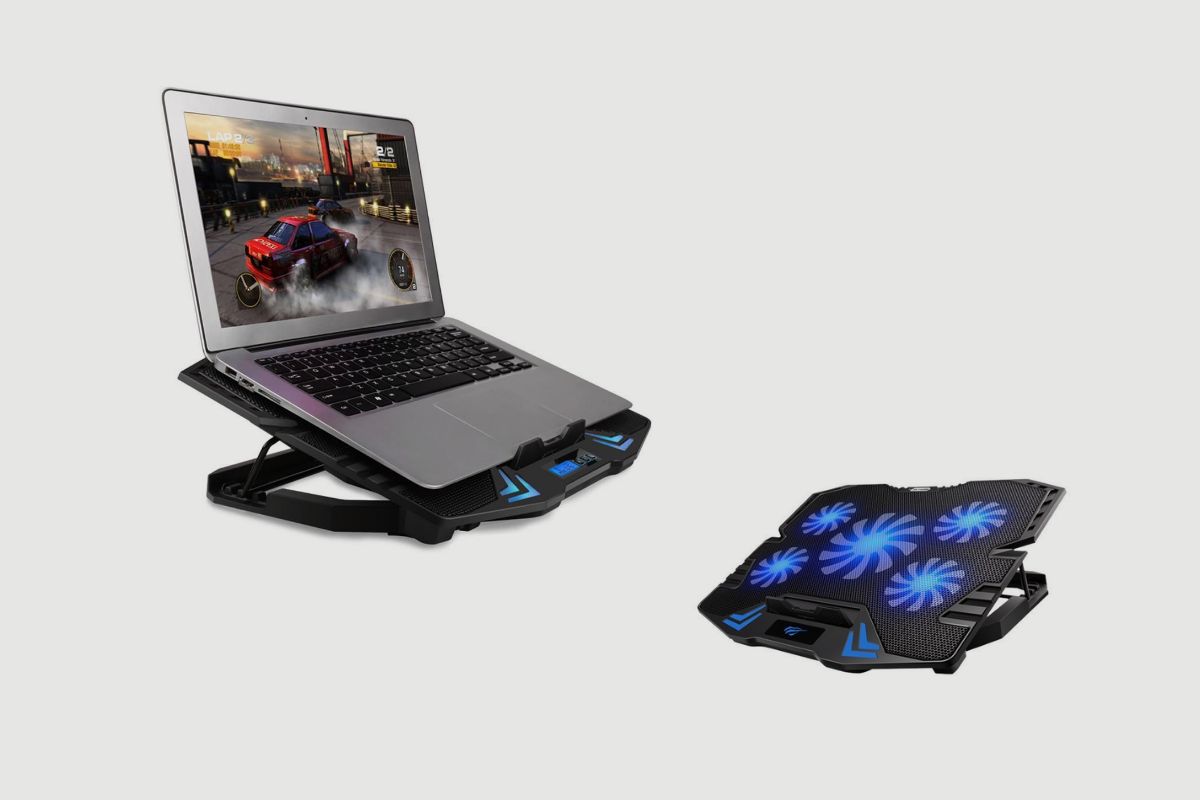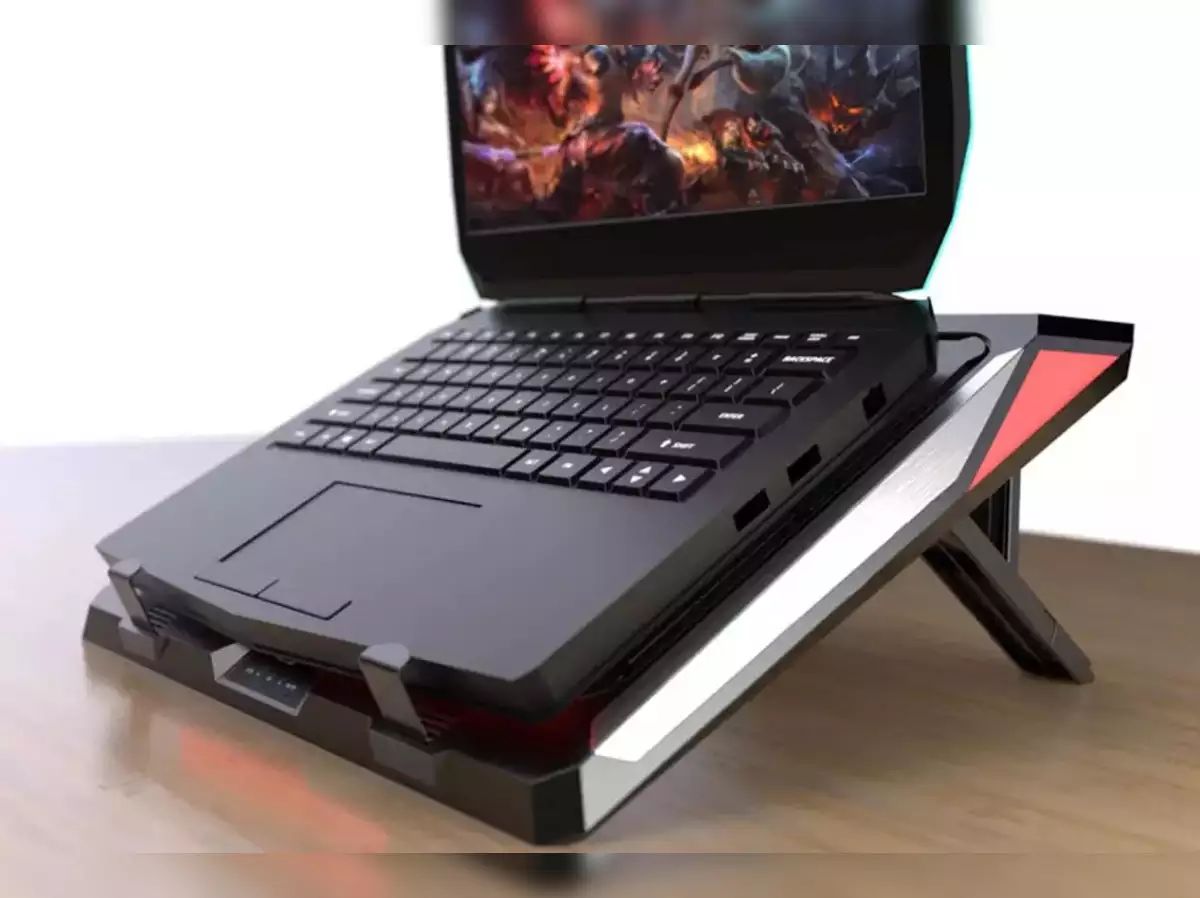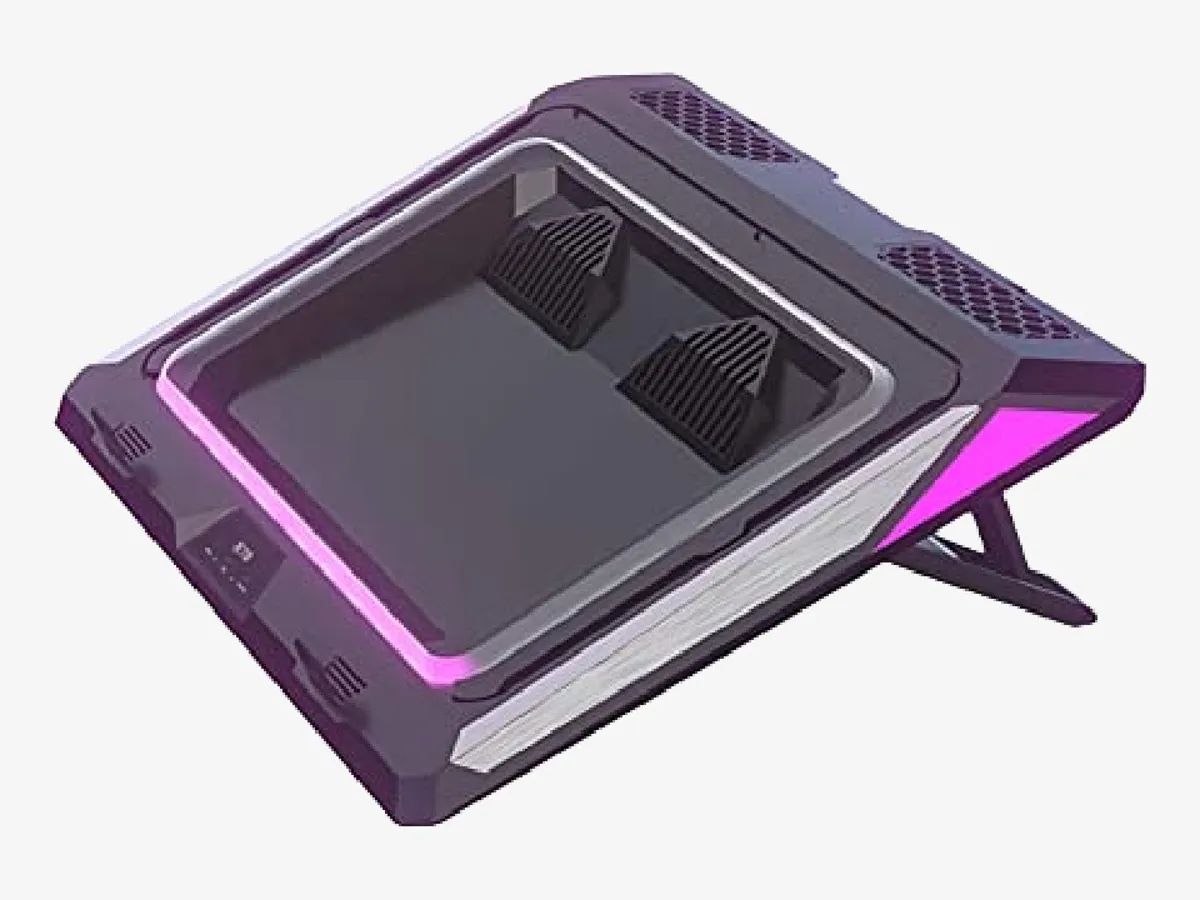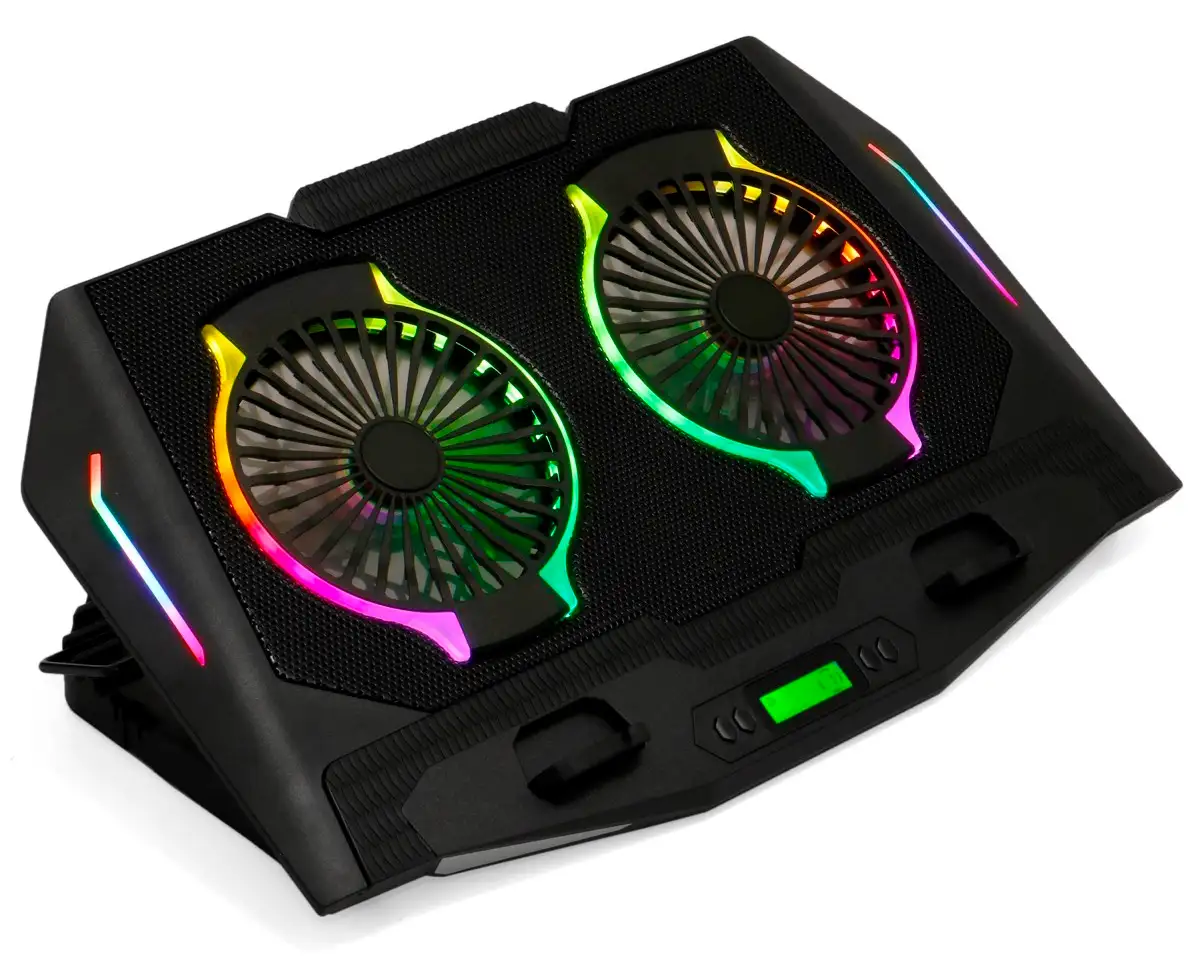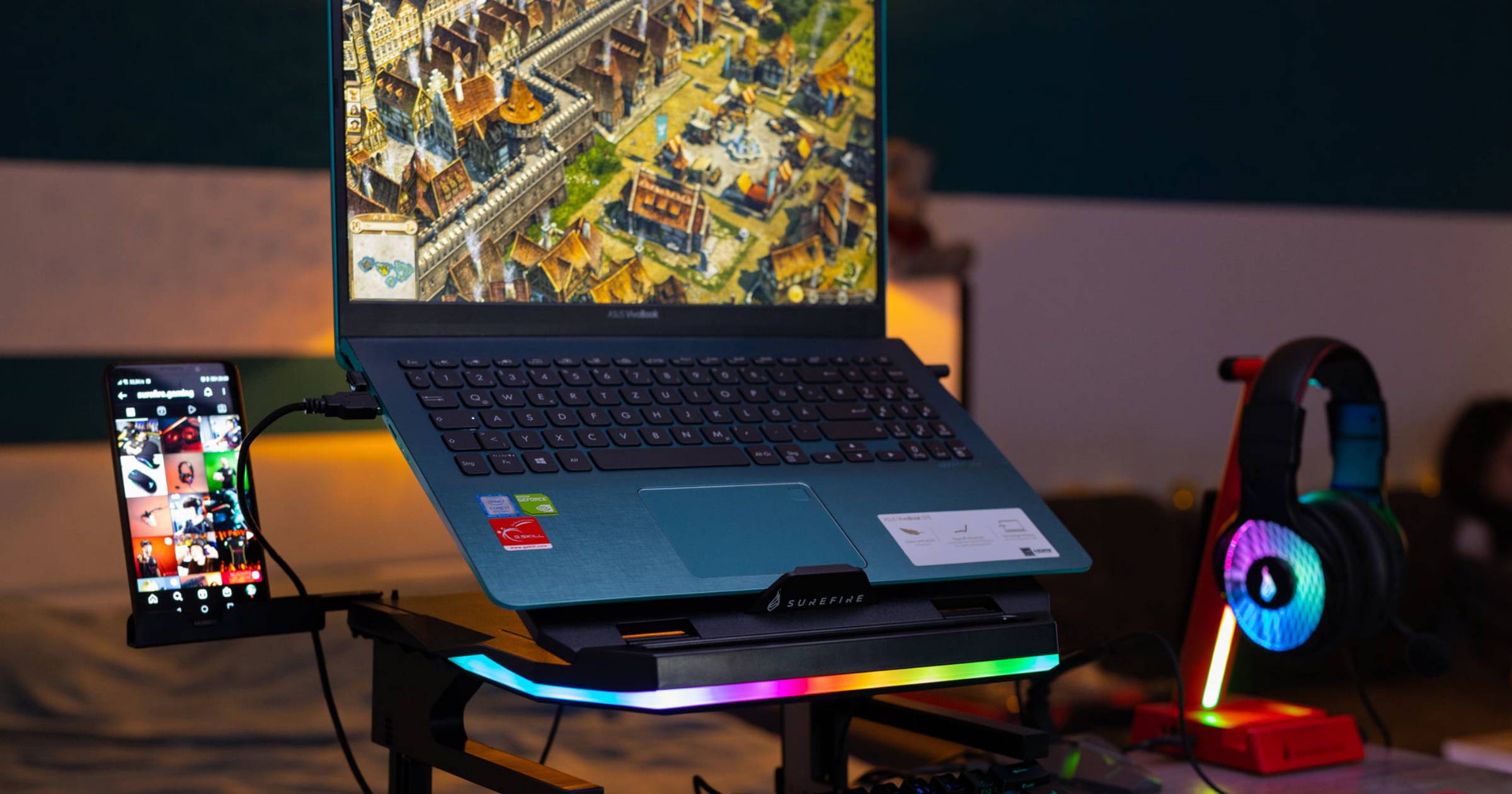Introduction
Gaming laptops have become increasingly popular among gamers who want the flexibility to play their favorite games on the go. However, intensive gaming sessions can put a significant strain on a laptop’s hardware, causing it to generate excessive heat. Excessive heat can lead to performance issues, decreased lifespan of components, and even thermal throttling, which can negatively affect gaming performance.
Ensuring proper cooling for your gaming laptop is essential to maintain optimal performance and prevent potential damage. In this article, we will discuss why cooling is crucial for your gaming laptop and provide you with valuable tips and strategies to keep your laptop running cool, even during intense gaming sessions.
Whether you’re a casual gamer or a professional eSports player, implementing effective cooling techniques can help you get the best out of your gaming laptop and prevent overheating issues. By following these tips, you can enhance the longevity, performance, and overall gaming experience of your laptop.
Why does your gaming laptop need cooling?
When gaming, your laptop’s components, such as the CPU (Central Processing Unit) and GPU (Graphics Processing Unit), work at full capacity to deliver the best gaming performance. However, this increased workload generates a significant amount of heat.
Excessive heat can cause several problems for your gaming laptop. Firstly, it can lead to thermal throttling, which occurs when the CPU or GPU automatically reduces its clock speed to prevent overheating. This can result in decreased performance and a less immersive gaming experience.
Secondly, prolonged exposure to high temperatures can damage your laptop’s internal components, including the processor, graphics card, and even the battery. Overheating may shorten their lifespan and disrupt the overall functionality of your gaming laptop.
Additionally, heat can cause discomfort for the user, making it difficult to use the laptop for extended periods. A hot laptop can be quite frustrating, especially when you’re in the middle of an intense gaming session.
By providing effective cooling for your gaming laptop, you can mitigate these issues and enjoy a smoother gaming experience. Cooling not only helps maintain the optimal temperature for your laptop’s components, but it also improves overall performance and prolongs the lifespan of your machine.
Now that we understand the importance of cooling, let’s explore some practical tips and techniques to help cool your gaming laptop and maximize its gaming potential.
Tips for cooling your gaming laptop
Proper cooling is crucial for maintaining the performance and longevity of your gaming laptop. Here are some effective tips to help keep your laptop running cool, even during intense gaming sessions:
- Keep it on a flat surface: Placing your laptop on a flat surface allows for better airflow and prevents the accumulation of heat. Avoid using your laptop on soft surfaces like beds or carpets, as they can block the air vents.
- Use a laptop cooling pad: A laptop cooling pad is a valuable accessory that helps to improve airflow and reduce the temperature of your laptop. These pads usually have built-in fans that provide additional cooling.
- Elevate your laptop: Elevating your gaming laptop slightly can help improve airflow and dissipate heat more efficiently. You can use a laptop stand or even simple objects like books to elevate the back of your laptop.
- Clean the vents and fans regularly: Over time, dust and debris can accumulate in the air vents and fans of your laptop, obstructing airflow and causing overheating. Regularly clean these components with compressed air or a soft brush to ensure optimal cooling.
- Avoid blocking the air vents: Be mindful of not blocking the air vents of your laptop. Keep them clear of any obstructions, such as papers, fabrics, or your hands, as this can impede airflow and lead to overheating.
- Optimize your laptop’s power settings: Adjusting your laptop’s power settings can help manage heat generation. Set your laptop to a balanced or power-saving mode, which can reduce the workload on the CPU and GPU, resulting in lower heat output.
- Monitor and manage your laptop’s temperature: Install software to monitor your laptop’s temperature in real-time. This allows you to keep track of any temperature spikes and take necessary actions, such as closing resource-intensive applications or adjusting cooling settings.
- Keep your gaming laptop in a cool environment: Ensure that your gaming setup is in a well-ventilated room. Avoid using your laptop in direct sunlight or in areas with high ambient temperatures, as this can further elevate the already high temperature of your laptop.
- Consider undervolting your laptop’s CPU: Undervolting involves reducing the voltage supplied to your CPU, which can help lower the temperature and improve heat dissipation. This technique should be done carefully, preferably with the guidance of a knowledgeable person or using specialized software.
- Use a laptop cooling software: Some software applications are specifically designed to enhance cooling for laptops. They allow you to control fan speed, adjust power settings, and monitor temperature. Explore and try out different cooling software to find one that suits your needs.
By implementing these tips, you can significantly improve the cooling performance of your gaming laptop and enjoy smoother gaming sessions without worrying about overheating issues.
Keep it on a flat surface
One simple yet effective tip to cool your gaming laptop is to keep it on a flat surface. When you place your laptop on a flat surface, such as a desk or table, it allows for better airflow and prevents the accumulation of heat.
Using your laptop on uneven or soft surfaces like beds or carpets can block the air vents and restrict the airflow, leading to increased heat buildup. This can result in overheating and decreased performance. Additionally, soft surfaces can trap heat, exacerbating the temperature issues.
By keeping your laptop on a flat surface, you ensure that the air vents on the bottom and sides of the laptop remain unobstructed. This allows the laptop’s internal fans to function optimally, pushing out hot air and drawing in cool air, thus maintaining a balanced temperature.
It’s important to note that many gaming laptops have bottom-mounted air vents that expel heat. Placing your laptop on a flat surface allows the heat to dissipate efficiently, preventing it from being trapped and leading to thermal buildup.
If you prefer using your laptop on your lap or a non-flat surface, consider using a laptop cooling pad. These accessories elevate your laptop slightly and incorporate built-in fans to enhance airflow, effectively reducing the temperature of your laptop. Cooling pads not only improve cooling but also provide a more comfortable ergonomic setup.
Remember, the surface on which your laptop rests plays a significant role in its cooling performance. Always aim to keep your gaming laptop on a flat and stable surface to maximize airflow and minimize the risk of overheating.
Use a laptop cooling pad
Using a laptop cooling pad is an effective way to enhance the cooling performance of your gaming laptop. These dedicated accessories are designed to improve airflow and reduce the temperature of your laptop during intense gaming sessions.
A laptop cooling pad typically consists of a flat surface with built-in fans. The fans create additional airflow around your laptop, helping to dissipate heat and prevent excessive temperature buildup. Some cooling pads even have adjustable fan speeds, allowing you to customize the cooling power based on your needs.
Using a cooling pad provides several benefits for your gaming laptop. Firstly, it enhances the overall airflow underneath your laptop. By elevating your laptop slightly, the cooling pad allows for better circulation of air through the air vents, preventing them from being blocked by the surface on which your laptop rests.
Secondly, the fans on the cooling pad provide direct airflow to the underside of your laptop, where crucial components such as the CPU and GPU are located. This targeted cooling helps to keep these components at lower temperatures, reducing the risk of thermal throttling and improving overall performance.
Furthermore, a laptop cooling pad can significantly reduce the temperature of your laptop, creating a more comfortable gaming experience. By preventing excessive heat buildup, it reduces the chances of your laptop becoming uncomfortably hot to the touch, especially during long gaming sessions.
When choosing a laptop cooling pad, consider factors such as the size and compatibility with your gaming laptop. Ensure that the cooling pad has enough surface area to accommodate your laptop comfortably. Additionally, check the number and placement of the fans to optimize cooling efficiency.
Keep in mind that a laptop cooling pad is not a substitute for regular maintenance and proper airflow management. It is still important to clean the vents and fans of your laptop regularly to remove any dust or debris that may hinder proper cooling.
By using a laptop cooling pad, you can significantly improve the cooling performance of your gaming laptop, ensuring optimal temperature levels and extending the longevity of your laptop’s components.
Elevate your laptop
Elevating your gaming laptop is a simple yet effective way to enhance its cooling performance. By raising your laptop slightly off the surface on which it rests, you can improve airflow and dissipate heat more efficiently.
When your laptop is placed directly on a flat surface, such as a desk or table, the air vents on the bottom of the laptop may get partially blocked. This can hinder the intake of cool air and the expulsion of hot air, causing the temperature to rise.
By elevating your laptop, you create space underneath it for air to flow freely. This allows for better circulation and helps to cool down the internal components, such as the CPU and GPU, that generate the most heat during gaming sessions.
There are various ways to elevate your gaming laptop. You can use a laptop stand or a dedicated laptop riser that provides a stable and ergonomic platform. Alternatively, you can use everyday objects like books or blocks to lift the back of your laptop slightly.
When elevating your laptop, ensure that it is at a comfortable angle for viewing and typing. It’s essential to find a balance between improving cooling and maintaining a comfortable posture while gaming.
In addition to improving cooling, elevating your laptop can also have ergonomic benefits. By raising the screen to eye level, you can prevent strain on your neck and improve your overall posture, making long gaming sessions more comfortable.
Remember to keep in mind the placement of your laptop’s air vents when elevating it. Ensure that the vents are not obstructed by any objects and that there is enough space around the laptop for unrestricted airflow.
Elevating your gaming laptop is a simple and cost-effective solution for improving its cooling performance. By creating better airflow and allowing heat to dissipate more efficiently, you can maintain optimal temperature levels and enhance the overall longevity and performance of your laptop.
Clean the vents and fans regularly
Regularly cleaning the vents and fans of your gaming laptop is essential for maintaining optimal cooling performance. Over time, dust, dirt, and debris can accumulate in these areas, obstructing airflow and causing the temperature to rise.
The accumulation of dust and debris on the vents and fans acts as an insulating layer, preventing heat from escaping and reducing the efficiency of the cooling system. As a result, your laptop may experience higher temperatures, increased fan noise, and potential performance issues.
To clean the vents and fans, start by powering off your laptop and unplugging it from any power source. Use a can of compressed air or a soft brush to gently remove any dust or debris from the vents. Be careful not to push the dust further into the system.
If you are using compressed air, hold the can upright and use short bursts of air to blow out the dust. Pay particular attention to the areas around the vents and fan blades, as these are the most likely to accumulate dust.
For more stubborn dirt or dust, you can use a soft brush to gently loosen it and then blow it away with compressed air. Avoid using any liquids or cleaning agents, as they can damage the internal components of your laptop.
It is recommended to clean the vents and fans of your gaming laptop every 2-3 months, or more frequently if you notice a significant buildup of dust. Regular maintenance will help ensure proper airflow and prevent overheating.
In addition to routine cleaning, it’s crucial to keep your gaming environment clean and free from excessive dust. Dust particles in the air can settle on your laptop’s surfaces and enter the vents, contributing to the buildup of debris over time. Regularly dusting your gaming area can help minimize the amount of dust that reaches your laptop.
Aside from maintaining optimal cooling, investing a few minutes in cleaning the vents and fans can also extend the overall lifespan of your laptop. By keeping the internal components clean and free from obstruction, you can prevent unnecessary strain on the cooling system and reduce the risk of component failure.
Make cleaning the vents and fans of your gaming laptop a regular part of your maintenance routine to ensure efficient cooling and prolong the life of your machine.
Avoid blocking the air vents
Proper airflow is essential for cooling your gaming laptop effectively. One common mistake that can hinder airflow and lead to overheating is blocking the air vents. It’s important to ensure that the air vents of your laptop remain unobstructed for optimal cooling performance.
The air vents on a gaming laptop are strategically placed to allow cool air to enter and hot air to exit. Blocking these vents with objects, such as papers, fabrics, or even your hands, can restrict the airflow and impede the cooling process.
When using your laptop, be mindful of the placement of your hands and any objects around it. Avoid resting your laptop on soft surfaces like beds or pillows, as they can cover the air vents and restrict airflow. Instead, use a firm and flat surface that allows for proper ventilation.
In addition, ensure that you are using your laptop on a stable surface. Unstable surfaces can cause vibrations and movements that may partially or completely block the air vents. This can lead to increased heat buildup and potential thermal throttling.
If you use your laptop on your lap, make sure to be cautious of not covering the air vents with your legs or clothing. It’s best to create a gap between your laptop and your body to allow for adequate airflow.
Keep in mind that some gaming laptops have air vents located on the sides or back as well. Take note of these additional vents and ensure they are not obstructed by any external objects, especially when using your laptop in a confined space.
By avoiding the blocking of the air vents, you ensure that the cooling system of your gaming laptop functions optimally. Proper airflow allows for the efficient exchange of hot air with cool air, preventing overheating and maintaining lower internal temperatures.
If you find that your laptop runs hot even when the vents are not obstructed, it may be a sign that the internal cooling system requires maintenance, such as cleaning the fans or replacing thermal paste. Consult your laptop’s user manual or seek professional assistance if necessary.
Remember, allowing unrestricted airflow by avoiding the blocking of air vents is crucial for maintaining the optimal cooling performance of your gaming laptop.
Optimize your laptop’s power settings
Optimizing your laptop’s power settings can significantly impact its cooling performance. By adjusting the power settings, you can reduce the workload on the CPU and GPU, effectively lowering heat generation and improving overall cooling efficiency.
Most gaming laptops offer multiple power profiles, such as Balanced, Power Saver, and High Performance. Each power profile sets different parameters for the laptop’s performance and power consumption.
When it comes to cooling, selecting a power profile that balances performance and energy consumption is ideal. The Balanced or Power Saver mode reduces the CPU and GPU’s clock speed, limiting their power output and reducing heat generation. This mode is suitable for lighter tasks or casual gaming sessions.
On the other hand, the High-Performance mode allows the CPU and GPU to run at their full potential, providing maximum gaming performance. However, this mode also increases power consumption and heat generation, putting more strain on the cooling system.
It’s important to consider your specific needs and the intensity of your gaming sessions when choosing a power profile. If you’re engaging in intense gaming with demanding graphics, the High-Performance mode may be suitable. However, for less demanding tasks or extended periods of gaming, the Balanced or Power Saver mode can help reduce heat buildup and extend battery life.
Additionally, adjusting other power settings in your laptop can further optimize cooling. Lowering the screen brightness, disabling unnecessary startup programs, and setting shorter sleep or idle times can contribute to reduced power consumption and heat generation.
Furthermore, you can customize advanced power settings to manage specific components. For example, you may want to limit the maximum processor state to reduce heat output. You can access these settings through the Power Options in the Control Panel or the Windows Settings menu.
Experimenting with different power settings and profiles can help strike a balance between performance and cooling efficiency for your specific needs. By optimizing your laptop’s power settings, you can reduce heat generation, alleviate strain on the cooling system, and improve overall cooling performance.
Monitor and manage your laptop’s temperature
Monitoring and managing your laptop’s temperature is crucial for maintaining optimal cooling performance and preventing overheating. By keeping track of the temperature levels, you can take necessary actions to mitigate any potential issues.
There are various software applications available that allow you to monitor your laptop’s temperature in real-time. These applications provide you with valuable information about the temperature of different components, such as the CPU and GPU.
Regularly checking the temperature of your laptop during gaming sessions allows you to identify any temperature spikes or abnormalities. If you notice that the temperature is consistently exceeding acceptable levels, it may be an indication of an underlying cooling issue or heavy workload on your laptop.
In such cases, you can take several steps to manage and reduce the temperature:
- Close unnecessary applications: Running multiple resource-intensive applications simultaneously can increase heat generation. Close any unnecessary applications or background processes to lighten the workload on your laptop’s components.
- Adjust graphics settings: Lowering the graphics settings in your games can reduce the strain on the GPU, resulting in lower temperatures. Sacrificing some visual details can help keep the temperature at a more manageable level.
- Use frame rate limiters: Many games offer frame rate limiters that cap the maximum frames per second (FPS). Limiting the FPS can reduce the strain on the GPU, leading to lower temperatures.
- Apply thermal paste: Over time, the thermal paste between the CPU and its heatsink may dry out and lose its effectiveness. Reapplying thermal paste can help improve heat transfer and reduce temperatures. However, this should be done with caution and preferably by a professional.
- Consider a laptop cooling solution: If your laptop consistently runs hot, even under normal usage, you can consider investing in additional cooling solutions like a more powerful cooling pad or a laptop cooling stand with built-in fans.
By actively monitoring your laptop’s temperature and taking appropriate measures, you can effectively manage the heat generated during intense gaming sessions. This helps prevent overheating, reduces the risk of thermal throttling, and prolongs the lifespan of your laptop’s components.
However, it’s important to note that these measures are supplemental and do not replace regular maintenance, such as cleaning the vents and fans. Keeping your laptop’s cooling system in good condition remains essential for optimal long-term cooling performance.
Stay vigilant and proactive in monitoring and managing your laptop’s temperature to ensure a smooth and cool gaming experience.
Keep your gaming laptop in a cool environment
The ambient temperature of your gaming environment can significantly impact the cooling performance and temperature of your laptop. It’s important to keep your gaming laptop in a cool environment to help maintain optimal temperatures and prevent overheating.
High ambient temperatures can make it more challenging for your laptop’s cooling system to dissipate heat effectively. When the surrounding air is already warm, it becomes less effective at absorbing the heat generated by your laptop’s components.
Avoid using your gaming laptop in direct sunlight or in rooms with poor ventilation. Direct exposure to sunlight can quickly raise the temperature of your laptop, causing it to overheat. Similarly, poorly ventilated rooms can trap heat, creating an unfavorable environment for your laptop.
When possible, game in well-ventilated areas with good airflow. Ensure that air can circulate freely around your laptop, allowing for efficient heat dissipation. A cool and well-ventilated room will help your laptop stay within more acceptable temperature ranges even during intense gaming sessions.
Air conditioning or fans can also help maintain a cool environment for your laptop. By actively regulating the temperature in the room, you can create a more favorable atmosphere for cooling performance.
If you frequently game on the go, consider using accessories like a laptop cooling pad or a laptop cooling stand with built-in fans. These accessories not only elevate your laptop for better airflow but also provide additional cooling to counteract any heat buildup.
It’s worth noting that while keeping your laptop in a cool environment is important, extreme cold temperatures can also impact its performance. Extremely low temperatures can cause condensation to form on the internal components of your laptop, potentially leading to damage. Therefore, it’s crucial to strike a balance and avoid exposing your laptop to extreme temperature conditions.
By maintaining a cool environment for your gaming laptop, you can help optimize its cooling performance and prevent overheating. This will contribute to a more stable and enjoyable gaming experience while also extending the lifespan of your laptop’s components.
Consider undervolting your laptop’s CPU
Undervolting your laptop’s CPU is a technique that can help reduce heat generation and improve cooling performance. This process involves lowering the voltage supplied to the CPU, which can lower the temperature and decrease power consumption without sacrificing performance.
Most CPUs are designed to operate at a certain voltage, but they can often function reliably at lower voltages. Undervolting allows you to find the optimal balance between performance and power consumption, resulting in cooler temperatures for your gaming laptop.
Undervolting can be done through specialized software, such as Intel’s XTU (Extreme Tuning Utility) or ThrottleStop. These tools allow you to modify the CPU’s voltage settings and perform stability tests to ensure the undervolt is stable and doesn’t cause system crashes or instability.
It’s important to note that undervolting should be done with caution and preferably by someone with experience or knowledge in CPU tuning. Incorrect undervolting may cause system instability or even damage to the CPU. It’s recommended to research your specific CPU model and consult online guides or forums for guidance.
Undervolting your laptop’s CPU can offer several benefits. Lowering the voltage reduces heat production, which can help alleviate thermal throttling and maintain consistent performance under heavy workloads. It can also extend the battery life of your laptop, as the reduced power consumption results in less strain on the battery.
Undervolting is particularly useful for gaming laptops, as gaming often puts a significant load on the CPU. By undervolting, you can lower the temperature of your CPU during gaming sessions, resulting in cooler overall temperatures for your laptop.
However, it’s important to ensure that the undervolted settings are stable and don’t cause system instability or crashes. Thoroughly test your undervolted settings under various loads and monitor the temperatures to ensure that your laptop remains thermally stable.
Undervolting your laptop’s CPU can be a valuable technique to help improve cooling performance and reduce heat generation. It requires careful research, proper tools, and cautious implementation. If done correctly, undervolting can result in cooler temperatures and better overall performance for your gaming laptop.
Use a laptop cooling software
Using a laptop cooling software can be an effective way to enhance the cooling performance of your gaming laptop. These software applications are specially designed to manage and control the temperature of your laptop, helping to prevent overheating and maintain optimal cooling efficiency.
Laptop cooling software typically includes various features and functionalities that allow you to monitor and control the temperature of your laptop. These features may include adjusting fan speed, monitoring CPU and GPU temperatures in real-time, and optimizing power settings for improved cooling performance.
By adjusting the fan speed, you can manually increase or decrease the fan’s rotation speed, effectively controlling the airflow inside your laptop. This can help lower the temperature during intensive tasks or gaming sessions, preventing overheating and maintaining stable performance.
In addition to fan speed control, laptop cooling software provides real-time temperature monitoring, allowing you to keep a close eye on the temperature of your CPU, GPU, and other critical components. By being aware of the temperature fluctuations, you can take immediate action to prevent overheating and potential performance issues.
Some advanced cooling software even offers automatic fan control based on temperature thresholds. This means that the software will adjust the fan speed automatically according to the temperature levels, ensuring efficient cooling without manual intervention.
Moreover, laptop cooling software can help optimize power settings for improved cooling. These power settings may include managing CPU performance modes, adjusting power limits, and configuring power profiles specifically designed for gaming or other resource-intensive tasks. By efficiently managing power consumption, the software can effectively reduce heat generation and promote more effective cooling.
It’s essential to choose reputable and reliable laptop cooling software from trusted sources. Do thorough research to find software that is compatible with your laptop model and offers the features you need.
Remember, laptop cooling software is a supplement to good cooling practices, such as cleaning the vents, using a laptop cooling pad, and maintaining a cool environment for your laptop. It should be used in conjunction with these practices to ensure optimal cooling performance.
By utilizing a laptop cooling software, you can have better control over the temperature of your gaming laptop, mitigate heat-related issues, and maximize the cooling efficiency, ultimately enhancing your gaming experience.
Conclusion
Elevating the cooling performance of your gaming laptop is essential for optimal performance, longevity, and an enjoyable gaming experience. By implementing the tips and strategies discussed in this article, you can effectively cool your gaming laptop and prevent overheating.
Keeping your laptop on a flat surface allows for better airflow, while using a laptop cooling pad can enhance cooling efficiency. Elevating your laptop and cleaning the vents and fans regularly can prevent dust buildup and obstruction, ensuring optimal airflow and heat dissipation.
Avoid blocking the air vents and optimize your laptop’s power settings to reduce heat generation. Monitoring and managing your laptop’s temperature is crucial, enabling you to take necessary measures to prevent overheating during intense gaming sessions.
Additionally, maintaining a cool environment for your gaming laptop by avoiding direct sunlight and ensuring proper ventilation is vital for efficient cooling performance.
Consider undervolting your laptop’s CPU and utilizing laptop cooling software to further enhance cooling efficiency and temperature control.
Incorporating these cooling techniques into your regular maintenance routine will help prolong the life of your gaming laptop, maintain stable performance, and provide a comfortable gaming experience.
Remember to combine these practices with general laptop care, such as regular software updates, malware protection, and proper handling and storage, to ensure the overall health and longevity of your gaming laptop.
By implementing these cooling tips, you can optimize the performance and extend the lifespan of your gaming laptop, allowing you to enjoy uninterrupted gaming sessions without the worry of overheating. Game on!







